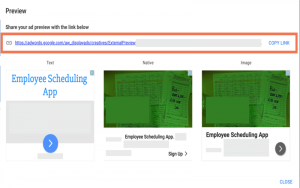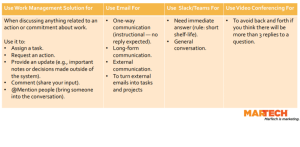So things aren’t going so well at work. Perhaps you’re surprised by the dooms day discussion with your supervisor, but chances are it’s not really a newsflash to you.
The reality is that most of us know when things aren’t going well…be it at home or work.
In a perfect world, these tough conversations would never happen and we would all be rock stars at every aspect of life. Unfortunately, that’s just not reality. Sometimes bad things happen to good people. Other times people are just in the wrong job or have personal issues that negatively affect job performance. And of course sometimes it truly is the fault of someone besides you.
Regardless of where the fault lies, if you’ve been asked (or even worse told!) that it’s time for a performance improvement plan, the stakes just went through the roof and it’s literally time to dig deep.
While it won’t be easy, it is possible to recover from these types of situations and put your career back on solid footing. But chances are it will take everything you’ve got! While there are lots of nuances, every performance improvement plan should have these five criteria at a minimum:
Well-Defined Goals
If you’ve never been a goal-setter before, it’s time to give it an earnest effort! Chances are strong that both HR and your leadership will be impressed (and possibly even surprised!) when you share your goals and the steps you plan to take to achieve them. If you’re new to goal setting, this should help you get started. “6 Secrets to Great Goal Setting.” But a word of caution on goal setting for these types of meetings, they absolutely, positively must be attainable. You see while I’m a big believer in stretch goals, they do nothing but harm once you find yourself in a performance based situation. Why? Because if you want to keep your job and get a second chance, it’s vital that you meet (and exceed!) every goal you set. For example, if tardiness is an issue instead of committing to arriving 15 minutes early, commit to an on-time arrival for the next 30 days. And then arrive early!
Measurement for Success
How can you achieve what you can’t measure? While that may seem an odd question, with regards to setting great goals, it’s a foundational pillar. You see, solid goals have a defined ending point so you know when you can cross it off the list (as completed!) and move on to the next one. Think of it this way: if your goal is to start running, how do you know when you’ve completed the goal? A better goal for this same topic might be to train for and complete your first 5K. And if you’re in job performance hell, your ability to show you’re clearly accomplishing your goals is imperative. Set solid goals that have a defined and measurable component!
Defined Milestones
Having spent some of my career supervising Project Managers, I am well accustomed to the word, “milestone.” In the world of project management “milestones” denote important steps in the project, but the reality is they are much more than that! Setting good milestones helps keep the overall effort on schedule and greatly increases the odds of success. And using them in your performance improvement plan can do the same thing! Consider this example: Let’s say you need to improve a specific skill-set. Your milestones might look something like this: Take training class; Practice Skill for 30 Days; Meet with Supervisor for discussion. You see, setting milestones in your performance improvement plan provides the much-needed structure to accomplish your goals. They also make for great conversation during update conversations, but we’ll talk more about that in a bit.
Buy-In from Everyone!
You can have the best plan in the world and if the “powers that be” think it’s a loser, then your days are literally numbered. After you present your action plan for improvement to HR, you simply must ask for feedback. Ask a simple open-ended question like, “what do you think of my plan?” Or, “what changes would you recommend?” If they have no recommended changes, then one of two things is at play. The first (and most desirable!) is that like your plan and feel it might actually work. The second possibility is that they are simply going through the paces with this meeting and your fate has already been determined. Keep in mind that while this is a real possibility, it’s not reality until it happens. Literally you’ve got nothing to lose and everything to gain by assuming the former instead of the latter.
Solid Communication Plan
In these situations no news is NOT good news. Instead proactive communication is the goal. As simple as that sounds, finding the right balance can be a bit of a challenge. In order to ensure you’re not over chatting about the topic (and yes that’s possible!), simply ask your boss or HR how often and in what format they want to receive updates. And then do EXACTLY what they request…no more and no less. Make sure to arrive at each meeting with firm examples which highlight the positive changes you’re working to make. Perhaps you share a positive email from a colleague or even share that you’re ahead of schedule on a project if procrastination had been a problem historically. Regardless of the specifics, your goal in these meetings is to leave them with the impression that you are making progress toward the behaviors they want and that perhaps they should give you a bit more time!
Business & Finance Articles on Business 2 Community(71)
Report Post








